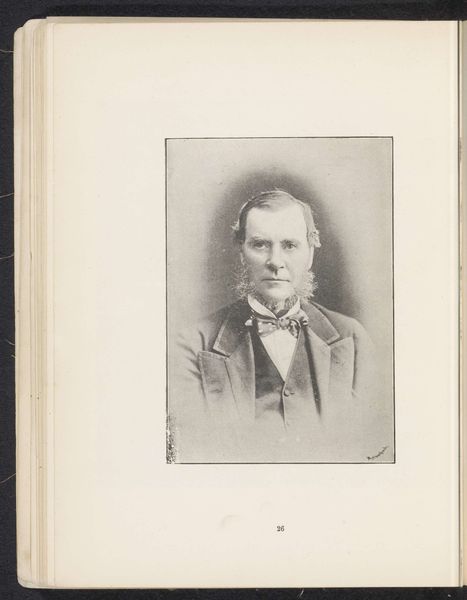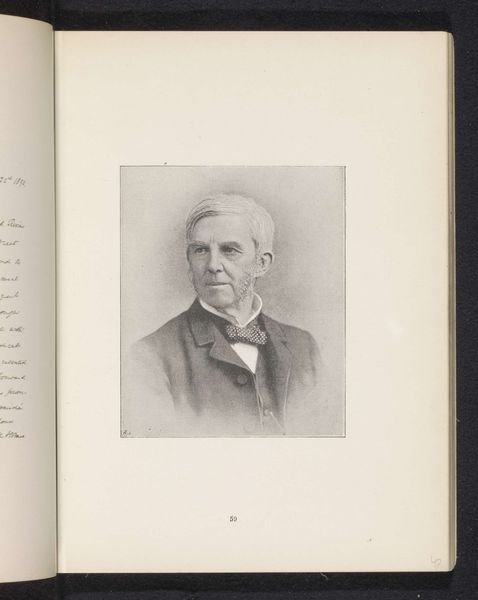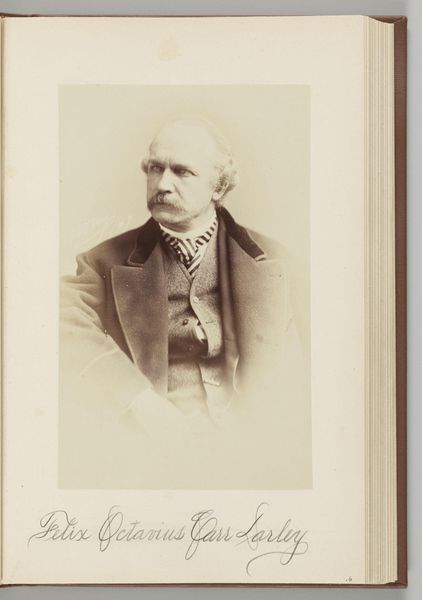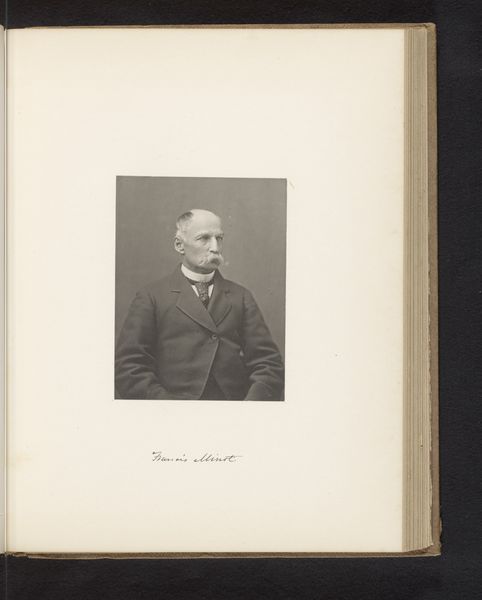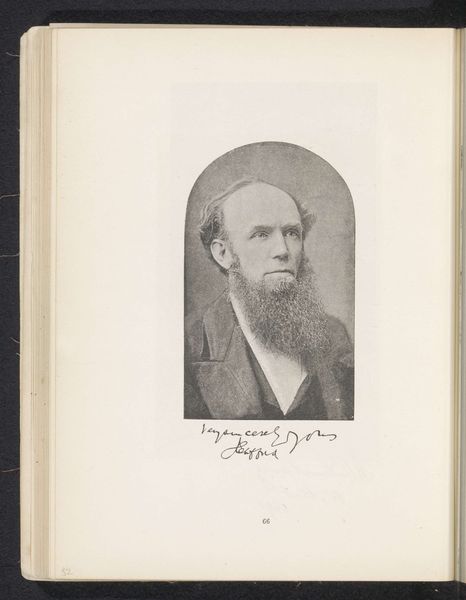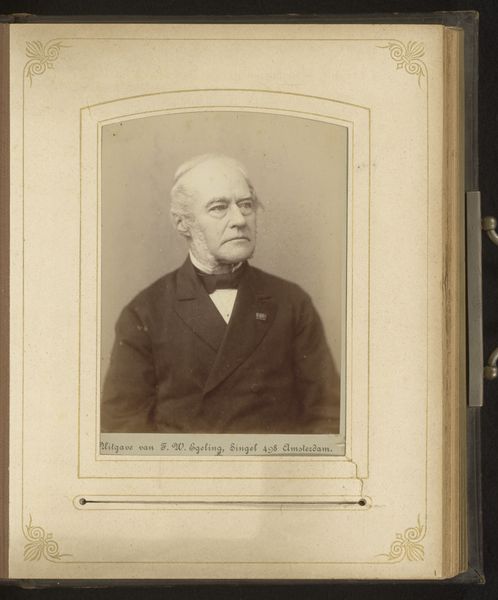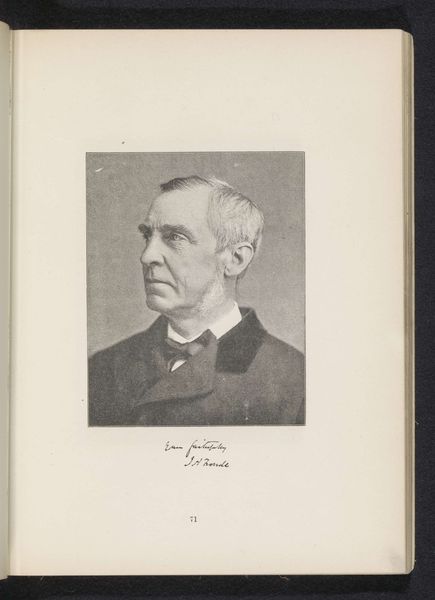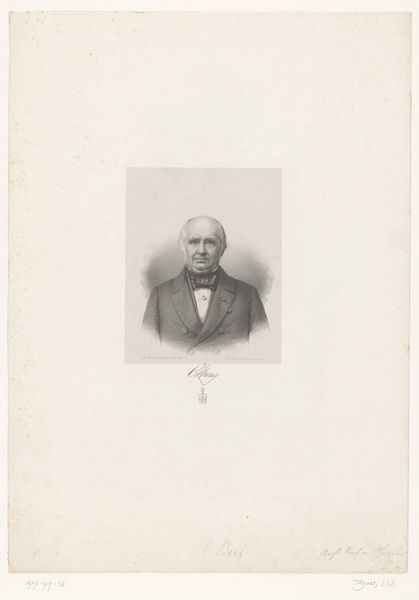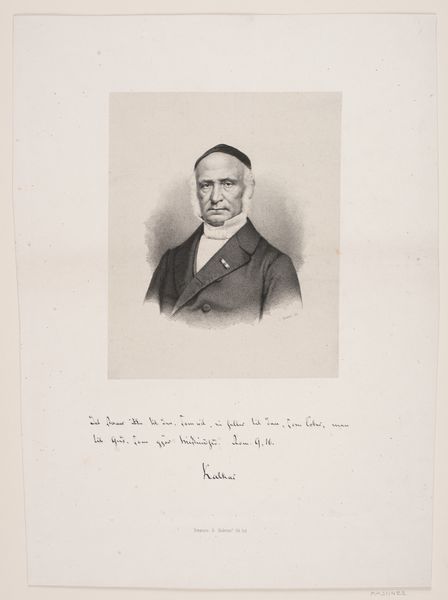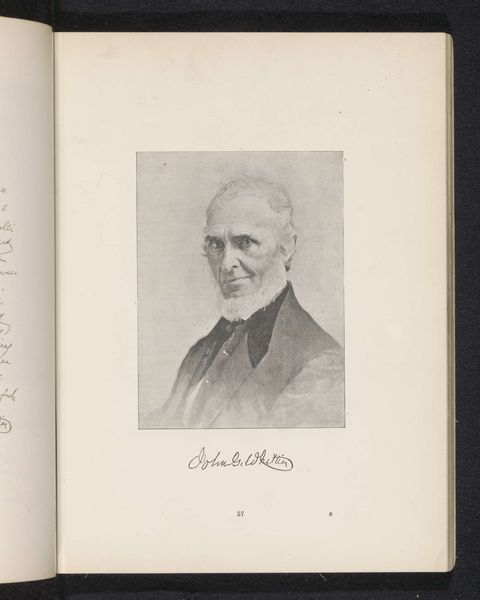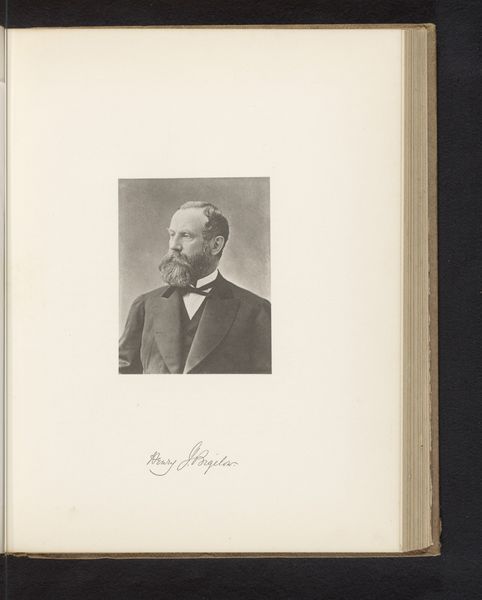
photography, gelatin-silver-print
#
portrait
#
photography
#
gelatin-silver-print
#
realism
Dimensions: height 141 mm, width 100 mm
Copyright: Rijks Museum: Open Domain
Editor: So here we have a portrait of Frederick Stanley, Earl of Derby. It’s a gelatin silver print made by Elliott & Fry sometime before 1891. It’s a very straightforward image, a close up. I find the tonal range fascinating; it seems so modern despite its age. What do you see in the formal structure? Curator: Indeed. The interplay of light and shadow creates a delicate tonal gradation across the subject’s face, giving volume. Note how the composition frames his face. The dark coat and bow tie, with its apex at his neck, functions almost like a stage upon which his features are presented. How do you interpret the contrast between his face and background? Editor: I notice the relative flatness of the background contrasts with the subject’s more pronounced dimensionality, which I think reinforces his importance. His direct gaze meets the viewer's. The focus seems deliberately tight. Would you agree? Curator: Precisely. The meticulous detail etched into the Earl’s face underscores the artistry in creating a photograph so close to the eye. It is hard to not be pulled in by this visual economy. The limited range emphasizes a very precise modulation of light. Does the signature change how you view this portrait? Editor: Now that you point it out, that makes it a sort of meta-portrait—a photo of a signed image, bringing another layer of human contact to the work. I see how much a careful look at structure enhances understanding. Curator: Yes, sometimes formal constraint elevates a work from a mere record to an art object of timeless interest.
Comments
No comments
Be the first to comment and join the conversation on the ultimate creative platform.
